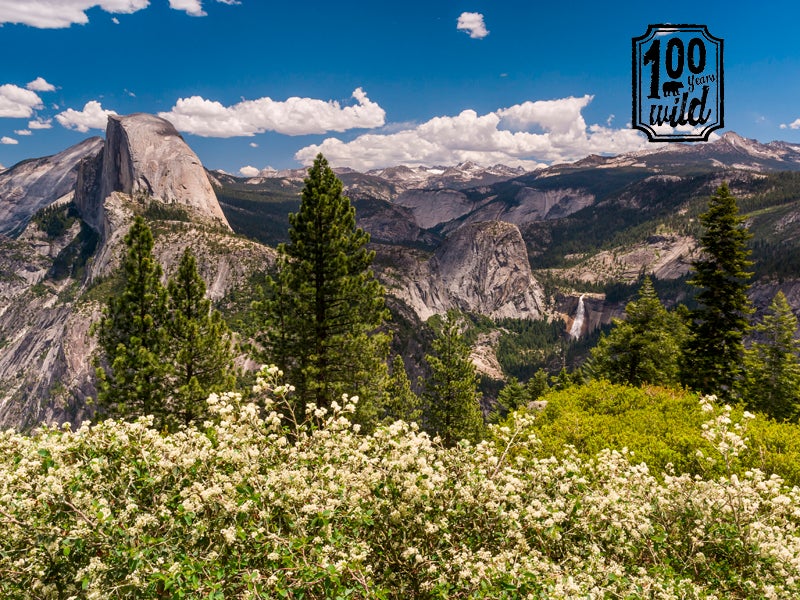No One Owns the Mountain
As we celebrate the centennial of the National Park Service, we must remember that the preservation of these lands for all people and creatures is a basic tenet of the native peoples’ wisdom about the natural world.

This page was published 9 years ago. Find the latest on Earthjustice’s work.
“Yosemite”—The name conjures up images of the iconic national park in California’s Sierra Nevada: the stoic and scenic Half Dome, the awe-inspiring lakes, the grazing big-horn sheep against the humbling backdrop of a range of glacier-carved mountains. But what many people don’t think about are the park’s first inhabitants, the Ahwahneechee.
For thousands of years, the Ahwahneechee called Yosemite home—until a California state militia unit known as the Mariposa Battalion evicted the tribe in 1851 to pave the way for European-American settlement. Yet very few visitors are made aware of the tribe’s existence as they hike the world-renowned valley. This failure to acknowledge and honor the land’s early inhabitants can be found in the early beginnings of the American conservation movement and too often still characterizes mainstream thinking about the American landscape.
John Muir, for example, envisioned that, “[b]rought into right relationship with the wilderness,” man “would see that he was not a separate entity endowed with a divine right to subdue his fellow creatures and destroy the common heritage, but rather an integral part of a harmonious whole.” Yet Muir gave little attention to the fact that the culture of the native people expelled from the Yosemite Valley in many ways epitomized his vision for a harmonious relationship with nature.
Today we celebrate the centennial of the National Park Service and its stewardship of our natural, historical and cultural treasures as a shining counterpoint to what is too often our unsustainable exploitation of other landscapes. But we should not overlook the fact that tribal nations have long understood that rivers, meadows and mountains are not something that can be owned by an individual. And though they aren’t often given credit for the idea, the preservation of these lands for all people and creatures is a basic tenet of native peoples’ relationship with the natural world. One need only look at the heavily developed and commercialized landscape around Niagara Falls to see what would have been in store for Yosemite, Yellowstone and similar locations but for the decision to dedicate them to public ownership. Now those lands are part of the national heritage that we all share as opposed to the private enclaves of the wealthy or the tourism industry.
As national parks continue to face enormous challenges—from climate change to resource exploitation—it’s vitally important that environmental and conservation groups work hand-in-hand with the park’s original inhabitants as we protect these irreplaceable landscapes. To that end, Earthjustice is working alongside many Native tribes and indigenous communities to preserve and protect their ancestral homelands, including in areas that have a close nexus to the national parks. Our attorneys are working with the Blackfeet tribe to defend against attempts to open public lands to oil and gas drilling on the doorstep of Glacier National Park. We’re also working beside the Nez Perce tribe in calling for the removal of destructive dams on the Snake River that threaten the rivers’ salmon and the livelihood and culture of tribal members. And together with the Havasupai tribe, we’re successfully challenging plans to create a sprawling urban development near the steps of the Grand Canyon.
We can’t rewrite history, but the work that we do with our allies can send a powerful message about equity and inclusion. Only by acknowledging and embracing the full scope of our nation’s cultural diversity can our national parks fulfill their mission of protecting and preserving our shared national heritage.
As the National Park Service turns 100 this summer, the 100 Years Wild series is celebrating the value of public lands as refuges for wildlife and people, while also shining a light on the threats to these irreplaceable landscapes in a changing and warming world.